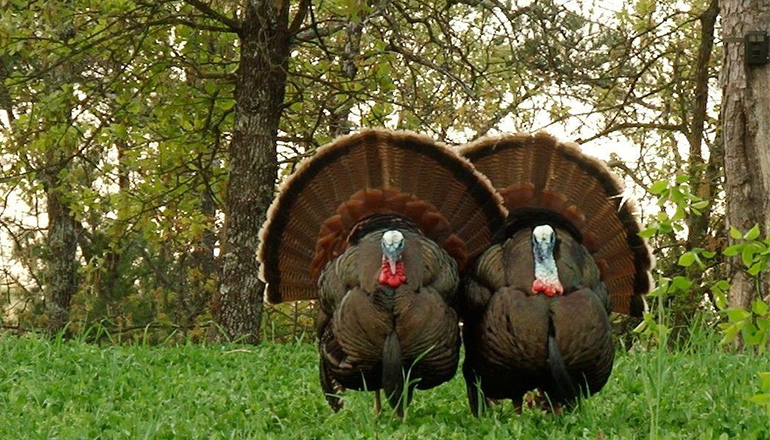This year’s annual wild turkey brood survey by the Missouri Department of Conservation shows that turkey production was slightly better on the statewide scale this year and some regions saw significant improvements in productivity.
MDC’s statewide poult-to-hen ratio (PHR) for this year was 1.0, which was 11% greater than the 2019 PHR and equal to the average production observed during the previous five years. However, when comparing the statewide PHR to the average turkey production observed over the last 10 and 20 years, production in 2020 was below-average.
Regionally, production varied quite a bit across the state. PHRs ranged from a low of 0.7 in the Ozark Border, Ozarks West, and West Prairie Regions to a high of 1.4 in the Northeast and Northwest Regions (see related map).
Compared to last year, the Northeast and Northwest Regions saw a greater than 50% improvement in turkey production. The Lindley Breaks and Union Breaks Regions saw a 20% or greater improvement in turkey production this year compared to 2019.
Several regions—Mississippi Lowlands, Ozarks West, and West Prairies—saw poorer production this year than what was observed in 2019. The Ozark Border and Ozarks East Regions saw similar PHRs this year as in 2019.
More on Poult-to-Hen Ratio
Since 1959, MDC has conducted an annual wild turkey brood survey where MDC staff and citizen volunteers record the number of hens and recently hatched turkeys, which are called poults, they see during June, July, and August. These observations are then tallied to determine the success of the hatch, which is most often reported as a poult-to-hen ratio, or simply the average number of poults per hen observed during the survey.
According to MDC Turkey Biologist Reina Tyl, poult-to-hen ratio is a good measure of nesting success and poult survival.
“Each year, thousands of citizens participate in the survey and we are grateful for their contribution,” Tyl said. “During the three-month survey, participants reported sightings of more than 60,000 turkeys, which is a testament to the large number of dedicated volunteers that take time to participate in the survey each year.”
To participate in the annual wild turkey brood survey, email MDC’s Wild Turkey Management Program at [email protected] with “Wild Turkey Brood Survey” as the subject of the email and include complete name and mailing address.








